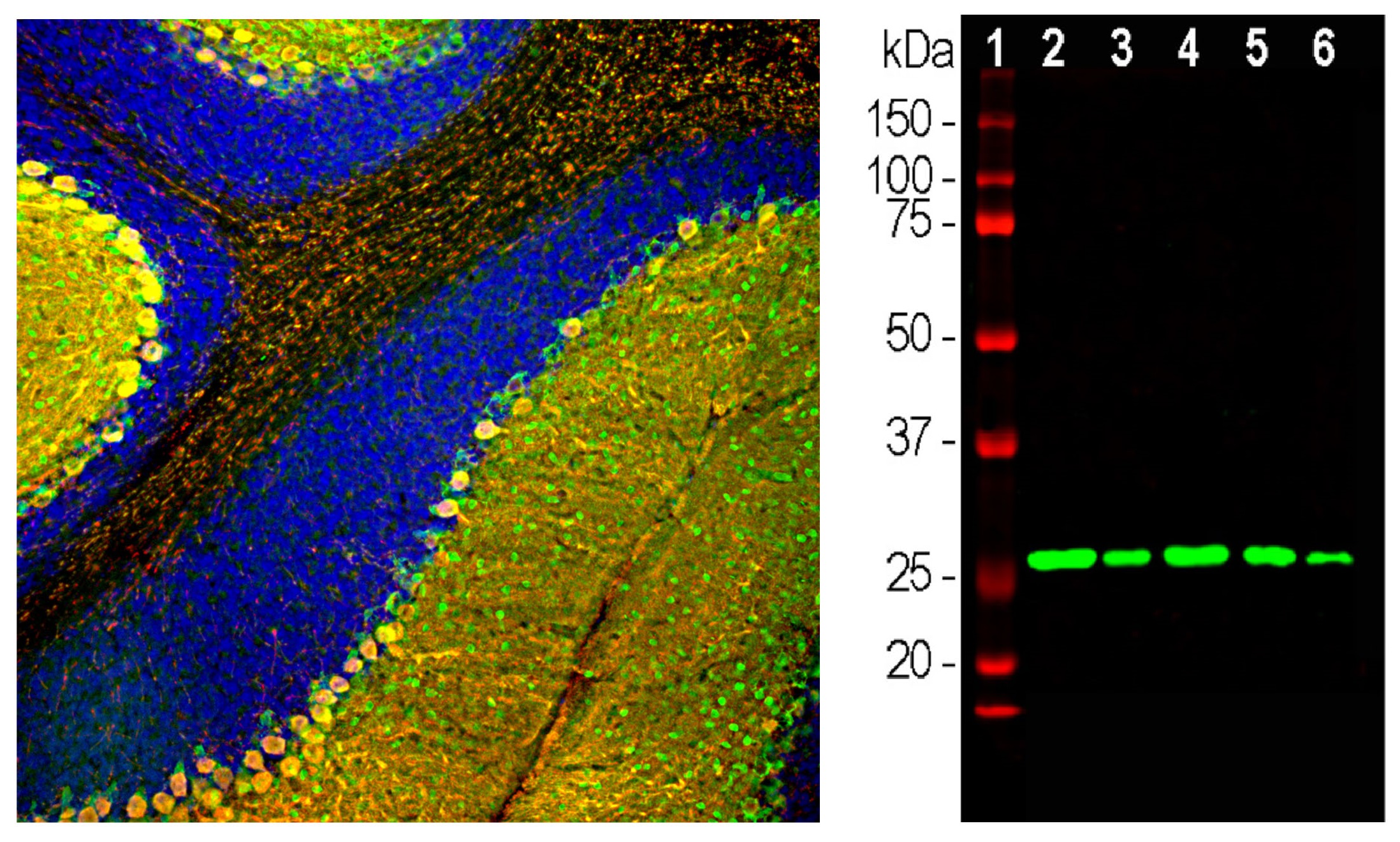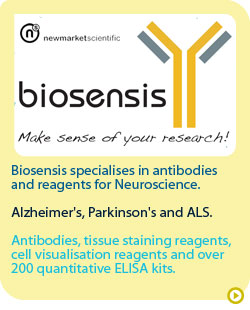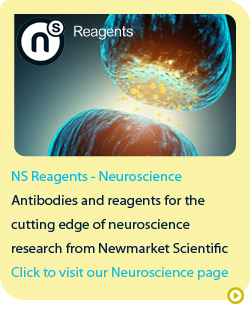Biosensis’ rabbit and chicken antibodies to human calretinin and parvalbumin
|
Rabbit and chicken antibodies to parvalbumin and human calretinin.
Interneurons represent a mixture of diverse neuronal sub-populations, and thus, antibodies to specific cell markers are important to differentiate interneuron cell types. Biosensis’ new mouse, rabbit and chicken antibodies to human calretinin (M-1799-100, R-1800-50, C-1801-50) and parvalbumin (M-1813-100, C-1814-50) are high-quality research reagents for immunohistochemical and western blotting studies to identify the physiological role of neuronal sub-populations.
Left: Rat cerebellum section stained with mouse anti-parvalbumin (M-1813-100, green) and chicken anti-calbindin (C-1798-50, red) by Immunohistochemistry. Blue: DAPI nuclear stain. Most Purkinje cells strongly express both parvalbumin and calbindin and thus appear yellow. Basket, stellate and Golgi cells express parvalbumin alone, and thus appear green.
Right: Detection of calretinin (29 kDa) by Western Blotting with rabbit anti-calretinin (R-1800-50) in (2) rat brain, (3) rat spinal cord, (4) mouse brain, (5) mouse spinal cord, and (6) cow spinal cord homogenates.
Interested in other neuronal marker antibodies?
Biosensis neuronal marker antibodies or our full range of antibodies to calretinin, or our parvalbumin antibodies.
|






